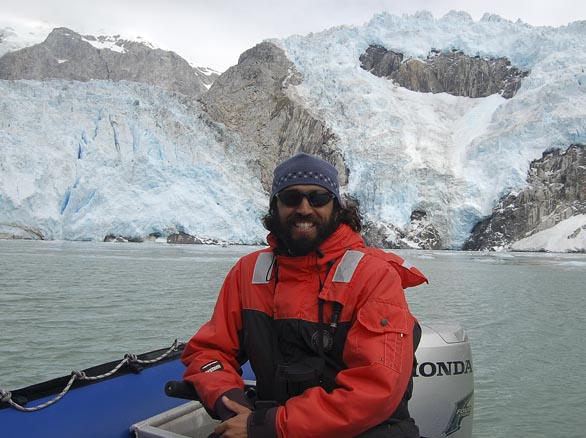I am a Wildlife Biologist for the U. S. Fish and Wildlife Service. I work at the Alaska Maritime National Wildlife Refuge, which is based in Homer, Alaska. Our Wildlife Refuge is very big. It includes 2,400 islands and it covers almost 5 million acres! Because it is so big we split up our refuge into separate areas. My area is called the Bering Sea Unit and it covers all of the refuge islands in the Bering Sea, including the Pribilof Islands. For my work, I conduct research and help manage wildlife on the islands.
2) What do you love about it?
I love that I get to live and work in such beautiful places throughout Alaska! The Pribilof Islands are one of my favorite places in the entire state and I really enjoy going there for work.
3) What’s challenging?
The changing climate in the Bering Sea and throughout the world is having a profound effect on the environment. Many of the seabird species that I study are being affected by climate change. My biggest challenge is trying to figure out what can be done to reduce the negative effects of climate change on the Bering Sea ecosystem.
4) How did you get into this work?
My Mom and Dad got me interested in birds when I was a kid. We had lots of bird feeders in the back yard and they would teach me how to identify all of the different birds that would come by our backyard throughout the year. This is what got me interested in biology and helped me choose it as a major in college. I originally came to Alaska to study ducks and geese, but as soon as I saw a Tufted Puffin I knew that I wanted to study seabirds.
5) What’s your favorite memory of life as a seabird biologist?
Several years ago I got a job with the National Science Foundation studying penguins in Antarctica. The island that I was living on is almost completely covered in ice and snow, but thousands of penguins live there. The main penguin colony on the island is on top of a hill, and I used to really enjoy watching the penguins slide on their bellies down the hill to get to the ocean.

